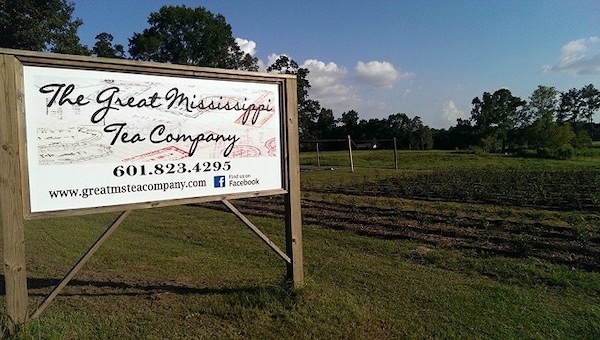Americans drink close to 4 billion gallons of tea a year, yet finding U.S.-grown tea is a serious challenge as it’s an incredibly rare thing to find. In fact, there are only about 60 tea farms in all of the U.S., though it can be grown just about anywhere. This was something that surprised Thomas Steinwinder, who runs the Longleaf Tea Co. in Mississippi. It’s one of just three operations in the state, which Steinwinder believes has the potential to become for tea what the Sonoma Valley is to U.S. wine.
Steinwinder, who won’t begin selling his Longleaf Tea until later this year, fully believes it’s possible to grow a tea industry in the U.S. He points to the growing demand for domestically produced goods, for starters. “We’re one of the largest consumers of tea in the world, but we grow none,” Steinwinder said. “I’d love to get to the point that we’re growing such high-quality tea that China starts importing it from us. That’s my goal.”
Steinwinder and his wife began their small operation with 1,200 plants back in 2018, but that was only after about seven years of research and in between his day job as an engineer. They’ve added about 1,000 plants every year since, but only harvested their first crop last year. That’s because it can take anywhere from 3 to 8 years for the plants to become productive, a big reason it’s so hard to find U.S.-grown tea. The plants themselves have incredibly long lifespans, though, with a well-established plant capable of producing usable leaves for 50 to 100 years.
All tea comes from the plant Camellia sinensis, an evergreen shrub native to East Asia. It grows easily in warmer climates, such as Hawaii, the south, coastal areas like California and South Carolina, and some Midwest regions. It is trickier in cooler areas, but there are tea farms as far north as Oregon and Michigan in the U.S. The differences in tea types – black, green, oolong, white, etc. – depends on which leaves are picked and what time of day, as well as how the leaves are processed.
Most tea picking is done by hand, making it a labor-intensive crop for most operations. There are mechanical harvesters on the market which large-scale operations growing for the commercial market utilize. The cutters strip the leaves, stem and all, which is perfectly fine for ground tea used in teabags like Lipton. Smaller growers like Steinwinder are generally specialty growers producing loose-leaf varieties, and most do all the picking by hand. A plant will grow a new flush every 7 to 15 days during the growing season, meaning near non-stop harvesting during that time. Processing the leaves is equally labor-intensive, and again, more so for small operations that can’t afford expensive machinery.
Angela McDonald, president of the United States League of Tea Growers, and founder of Oregon Tea Traders, says there is a lot of new machinery for both harvesting and processing coming on the market that is making it a feasible industry in the U.S. “It’s not necessarily [viable] now, but in 5 to 10 years – it’s a long-term crop – it’s possible.” McDonald and the U.S. League of Tea Growers are advocating for a sort of tea-growers cooperative, encouraging regional growers to invest in machinery together so there is one centralized processing facility that is shared.
The Great Mississippi Tea Company is another tea grower in the same state as Steinwinder’s farm. Owner and founder Jason McDonald started the operation with three plants he bought off eBay after his timber crop was wiped out by Hurricane Katrina. He and his partner Timothy Gibson made the decision after some careful research led them to discover that tea was actually a perfect crop for southwest Mississippi’s climate and acidic soil that tea plants love. In just a few years, they’ve turned those three plants into a successful business that’s won two silver medals at the World Tea Expo.
McDonald says they’ve found a niche in the market for specialty teas, which he likens to craft beers and single estate wines. “That’s the type of market that people are wanting. They’re wanting to know the farmer, they’re wanting connectivity, they’re wanting the story and the experience,” McDonald said. What Jason calls millennial buyers’ “conscientious consumerism” is a driving force behind the specialty-tea market. McDonald also points out that the U.S. has a lot to offer the world of tea, as the plants’ flavors differ by where the bushes are grown, as well as how they are nurtured and processed.
Many of the specialty tea farms around the U.S. have business models very similar to wineries. Steinwinder, for instance, is converting a farmhouse into a tasting room, something many tea growers use to market their different varieties, just like different wines. The Great Mississippi Tea Company gives tours around the tea fields and processing factory, as well as runs a tea shop and tasting room. There is a tea farm in Hawaii, the Volcano Winery, that actually used to be dedicated solely to wine but now produces both, including wine-infused tea and tea-infused wine! A lot of smaller operators also grow more than one product (herbs, flowers, fruit) and several host weddings, photoshoots, and other events. (Sources: Serious Eats, Daily Leader, NPR, Delta Farm Press)












